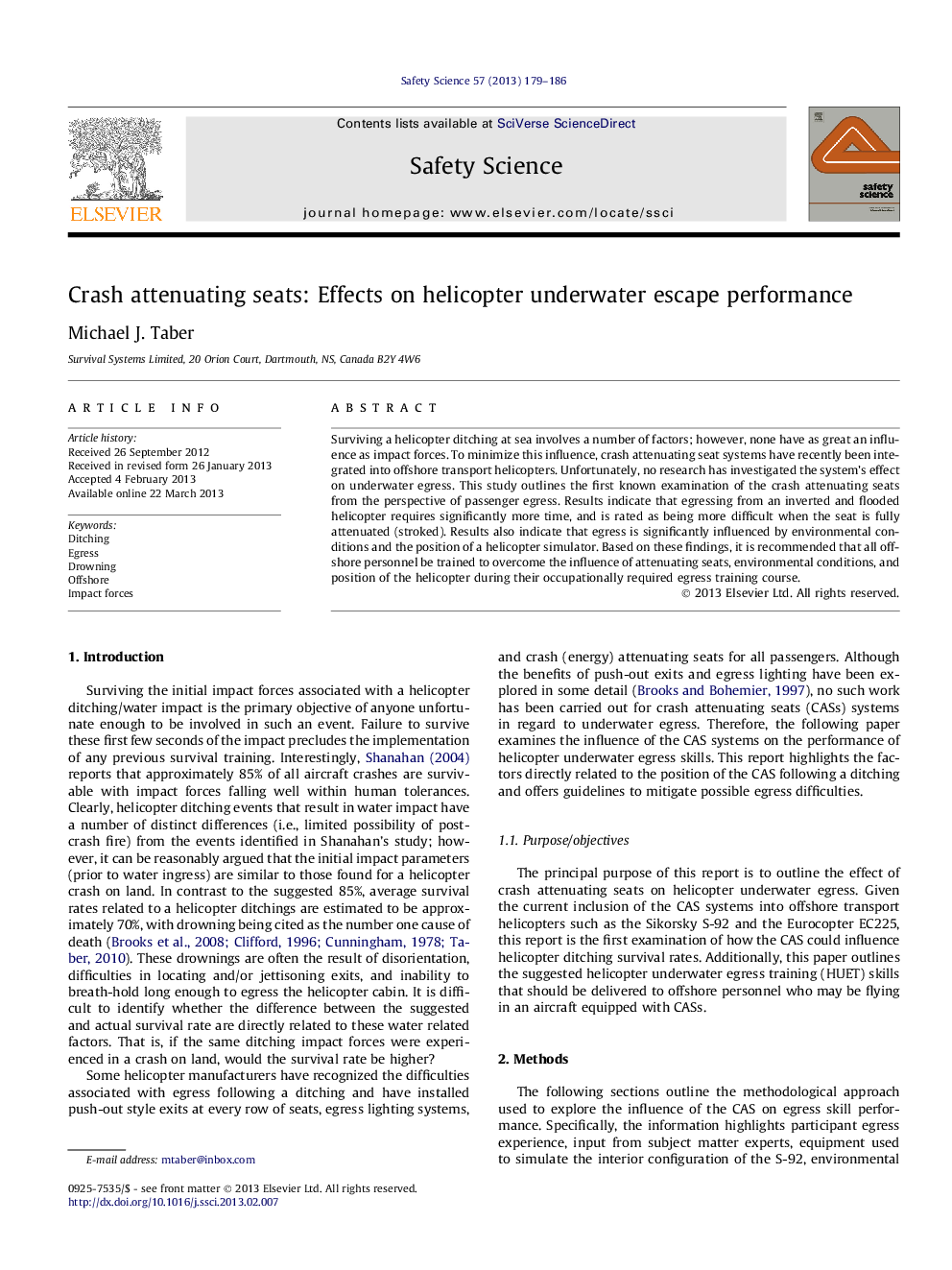| Article ID | Journal | Published Year | Pages | File Type |
|---|---|---|---|---|
| 589549 | Safety Science | 2013 | 8 Pages |
Surviving a helicopter ditching at sea involves a number of factors; however, none have as great an influence as impact forces. To minimize this influence, crash attenuating seat systems have recently been integrated into offshore transport helicopters. Unfortunately, no research has investigated the system’s effect on underwater egress. This study outlines the first known examination of the crash attenuating seats from the perspective of passenger egress. Results indicate that egressing from an inverted and flooded helicopter requires significantly more time, and is rated as being more difficult when the seat is fully attenuated (stroked). Results also indicate that egress is significantly influenced by environmental conditions and the position of a helicopter simulator. Based on these findings, it is recommended that all offshore personnel be trained to overcome the influence of attenuating seats, environmental conditions, and position of the helicopter during their occupationally required egress training course.
► First known analyses conducted for crash attenuating seats (CASs) as they relate to offshore helicopter egress in Canada. ► Identifies studies that need to consider the interaction between training, equipment, and organizational safety culture. ► CASs significantly affect the difficulty and time required to complete the egress tasks.
